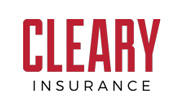Donate to charity with a CRT or CLT and enjoy multiple benefits
You take pride in knowing that your charitable gifts will help further the work of your favorite charitable organizations and enjoy a feeling of goodwill. When you make donations through a charitable remainder trust (CRT) or a charitable lead trust (CLT), you can enjoy many other benefits too. In fact, using these trust types can allow you to achieve some combination of the following objectives while you give to charity: minimize capital gains tax, diversify your portfolio, receive an income stream, and make gifts to loved ones at a reduced gift and estate tax cost.
Double giving power
Both a CRT and a CLT — which you can fund with assets such as stock or real estate — have split interests, meaning they have charitable and non-charitable beneficiaries.
With a CRT, the income beneficiaries — you and your spouse, for example — receive payouts under a formula from the trust for a set period or for the rest of your lives. At the end of the trust term, the “remainder” interest (what’s left in the trust) passes to one or more charities. The CRT assets won’t be included in your taxable estate. (But there will be gift tax consequences if you name someone other than you and your spouse as income beneficiary.) Additionally, you’ll enjoy an immediate, though only partial, income tax deduction when you create the trust, calculated based on the present value of the charity’s remainder interest.
With a CLT, the charity receives the “lead” interest — periodic payouts throughout the trust’s term. At the end of the term, the remaining principal reverts to you (what’s known as a grantor trust) or goes to one or more of your noncharitable beneficiaries, such as your children. A grantor CLT works similarly to a CRTin that you receive an immediate income tax deduction when you create the trust (for the present value of the charity’s interest) — but you have to pay tax on the CLT’s income and the CLT assets remain in your estate. With a nongrantor CLT, there are gift tax consequences — but you also get an income tax deduction and don’t have to pay tax on the CLT’s income. The CLT assets won’t be included in your taxable estate.
CRT at work
A CRT can be an ideal way to dispose of an asset that doesn’t produce much income and would create a large capital gain if you sold it, such as a highly appreciated stock that pays no dividend. By funding a CRT with appreciated assets and naming yourself the noncharitable beneficiary, you can not only increase your cash flow (through the CRT payouts) but also defer (and possibly even eliminate some) capital gains taxes while diversifying your portfolio. The CRT can sell the appreciated assets and use the proceeds to purchase diverse, income-producing assets.
The trust won’t incur capital gains tax because the charity is the remainder beneficiary. You’ll pay capital gains tax only on payouts you receive from the trust that are attributable to the capital gain.
CLT at work
A CLT can be useful if you’re charitably inclined and hold assets that you expect to appreciate substantially in the future, such as stock in an early stage company. The trust can allow you to ultimately transfer the assets to, for example, your children, at a substantially reduced gift tax cost.
Only the present value of the non-charitable interest at the time you fund the trust is subject to gift tax. So if the CLT assets’ growth rate is greater than the rate from the IRS tables used to determine the gift tax value, the excess growth will pass to the non-charitable beneficiary free of gift tax. (See “Benefiting charity now, a loved one later” for an example.)
Win-win
A CRT or a CLT can help you meet your charitable goals as well as other financial goals, such as reducing estate taxes and eliminating capital gains tax. Which one you should choose depends on your particular circumstances.
Sidebar: Benefiting charity now, a loved one later
Tom wants to give $50,000 per year to his favorite charity for the next 15 years. He transfers assets valued at $1 million into a CLT. The trust provides that 5%, or $50,000, will be payable to charity each year for the next 15 years, and at the end of the term the remaining trust assets will pass to Tom’s daughter, Lily. If the trust earns 8% per year, Lily will receive $1.8 million. If the present value of Lily’s interest for gift tax purposes, based on government tables, is only $500,000, that means $1.3 million passes to her tax-free in this example.
The accompanying pages have been developed by an independent third party. Commonwealth Financial Network is not responsible for their content and does not guarantee their accuracy or completeness, and they should not be relied upon as such. These materials are general in nature and do not address your specific situation. For your specific investment needs, please discuss your individual circumstances with
your representative. Commonwealth does not provide tax or legal advice, and nothing in the accompanying pages should be construed as specific tax or legal advice. Securities offered through Commonwealth Financial Network, Member FINRA/SIPC.
Securities and advisory services offered through Commonwealth Financial Network®, member FINRA/SIPC, a registered investment advisor. Fixed Insurance products and services offered by Wealth Planning Resources are separate and unrelated to Commonwealth. Wealth Planning Resources, LLC. 460 Totten Pond Road, Suite 600 Waltham, MA 02451. (781) 547-5620.
###
John B. Steiger is a financial consultant located at 460 Totten Pond Road Suite 600 Waltham, MA 02451. He offers securities as a Registered Representative of Commonwealth Financial Network®, Member FINRA/SIPC.. He can be reached at 781.547.5621 or at john@financialconnector.com.
